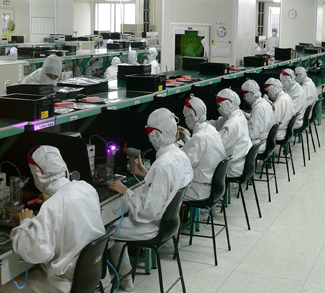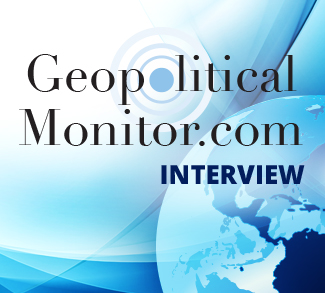Among the plethora of visits and possible talks of foreign investment and subsequent economic benefits – where future possibility is the word – a nation in the east is working silently to invest, train, and successfully set up model business entities in India. Taiwan in all her prowess is definitely worth a serious look and a change in our stubbornness towards a lackluster and subdued foreign policy. On the other side, there is really a massive gap of information related to Taiwan which is a shambles knowing that the tiny population of a little over 23 million is the 5th largest economy in Asia and the 16th largest economy in the world. A leading nation in the area of technological innovation, with its dominance in ICT products and peripherals controlling near about 90 % of markets share, and Taiwan was among the top 10 most innovative; it was also first in patent activity according to Bloomberg rankings.
Taiwan-India relations in historical perspective
In 1942, before independence, President Chiang Kai Shek of the Republic of China paid a visit to India and met with Mahatma Gandhi. He supported India’s freedom movement and even right after the independence of India, he appointed an ambassador to India. Civil war broke out in 1946, resulting in a victory by Mao Zedong’s Communist forces and the creation of the People’s Republic of China. From 1949 until his death, Chiang led the KMT government in exile in Taiwan. And, an appointed ambassador to India happened to be the first and the last.
India supported the PRC in 1949, going against Taiwan’s interests and thereby straining the relationship between the two. Even during the Cold War, the relationship continued to remain bitter. How ironic that while Taiwan supported India’s independence movement, thereby straining ties with the British, India could not reciprocate in a manner which required an intelligent and pragmatic approach. After forming the government in exile, backed by American support, Chiang launched Taiwan on the path of economic modernization, and in 1955 the United States signed an agreement guaranteeing Taiwan’s defense. Many countries continued to recognize Chiang’s government in exile as the legitimate Chinese government, and it would control China’s seat in the United Nations until 1971.
The normalization era
It is only in 1991 that India started looking east seriously and revived the relations under India’s Look East Policy (LEP). Later in 1995, Taiwan opened a representative office in Delhi as Taipei Economic and Cultural Center (TECC) and India established India-Taipei Association (ITA) for India in Taipei.
India’s ‘one China’ policy has been a major constraint in improving the bilateral relation with Taiwan and it is certainly not in our interests. Policies, especially in the area of foreign diplomacy, require a prudent approach which can be favorable to our economic development. India’ s foreign policy dwarfs the necessity of economic viability and gives more important to utopian ideological whims and fancy talk in the global arena, while the nation suffers on various parameters and remains abysmally underachieving in basic areas such as health, education, and infrastructure.
The need for greater Taiwan-India economic collaboration
In 2014, bilateral Taiwan-India trade reached USD 6.171 billion. Over the next five years, investments are likely to grow at a rate of around 10-15 annually, crossing US $ 1.7 billion (approx. Rs 8,600 crore) in India. Taiwanese exports to India contributed $1.28 billion, while imports from India touched $828 million. It must be noted that investment from Taiwan into India is lower then even much smaller countries like Vietnam and Cambodia. This creates a big opportunity for India to attract substantial foreign investment.
Taiwan is amongst the world’s leading exporting and importing countries. It is the leading producer and manufacturer in the world in foundries, IC packages, blank optical discs, mask ROMs, mobility scooters/powered wheelchairs and chlorella. If the products made by Taiwanese companies outside Taiwan are also taken into account, the list of products commanding a high share in the world is even longer which includes Notebooks, Tablets, LCD monitors, IC packages, motherboards (System & Pure MB), WLAN CPEs, cable modems, and digital blood-pressure monitors are a few examples. Apart from electronics, Taiwan’s agro-industries, particularly food-processing, maintain international standards. It also holds high rank in the international rating by agencies like the Institute for Management Development (IMD), Business Environment Risk Intelligence (BERI), the World Economic Forum (WEF), and the Heritage Foundation.
Recent news in the area of B2B collaboration, and in a big boost to the government’s ‘make it in India’ campaign, Foxconn also known as Hon Hai Precision Industry Co Ltd signed a memorandum of understanding (MoU) with the Maharashtra government to invest $5 billion in an electronics factory and an R&D center spread across 1,500 acres that will create 50,000 new jobs.
Further to note that India’s lack of hardware is serious concern. We created a talent pool of IT labor but again excluded the hardware based machine and tool industry. Again a lackluster approach which results in underdevelopment of IT industry and for the fact that we could not create and innovate in the same domain but work on the follow ups and mostly on back operations outsourced from abroad. Taiwan can help us in filling up the gap and bring much needed industry expertise in the IT domain. It will help us garner the benefit of IT industry at various level and develop indigenous hardware components.
Some further ideas:
A dedicated Taiwan-India zone. To give required impetus to our economic relations, India can help establish a Taiwanese economic special zone with basic infrastructure intact in the same way as we extended these benefits to Korea and Japan. It will not only help create positive sentiments among Taiwanese investors but quickly address the problematic area of doing the business with India. With these little steps, rewards can be immense.
Expanded cultural and educational ties. This is an area of immense opportunity that could really herald a new chapter in the existing bilateral relations. The Taiwan Economic and Cultural Center (TECC) in New Delhi already has various program running which provide scholarships to study in the Taiwan and get invaluable expertise in various leading universities. Besides, India can promote tourism in her own right as a big chunk of the Taiwanese population is Buddhist. Extending E-visa to Taiwan will further facilitate and enhance the ease of travel to India.
One China solutions with pragmatism and a positive approach towards Taiwan
Evidently, Taiwan is no miracle nation from rags to riches. Prudent macroeconomic policy, well-coordinated structural reforms and very efficient legal and monetary regulations all help to encouraged entrepreneurship and have enabled Taiwan’s economic rise. India can achieve much by her association with Taiwan, not only in terms of exchange of trade, but a larger goal of understanding these reforms in the complex environment that Taiwan is faced with vis-a-vis economic and political challenges both within and outside.
There is no other greater way of achieving an amicable solution to a complex problem than encouraging people-to-people contact. Taiwan, like any other thriving democracy, has a place in the world which is despite a largely unrecognized entity deserves a more pragmatic and mature thinking from world leaders and this is especially true for India.
The opinions, beliefs, and viewpoints expressed by the authors are theirs alone and don’t reflect any official position of Geopoliticalmonitor.com.




